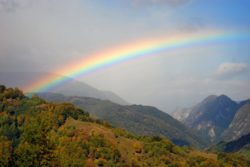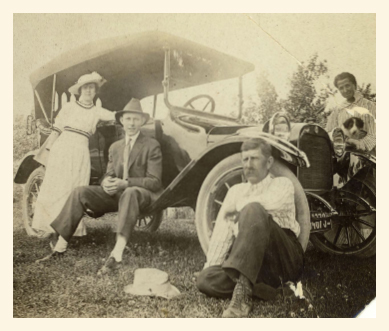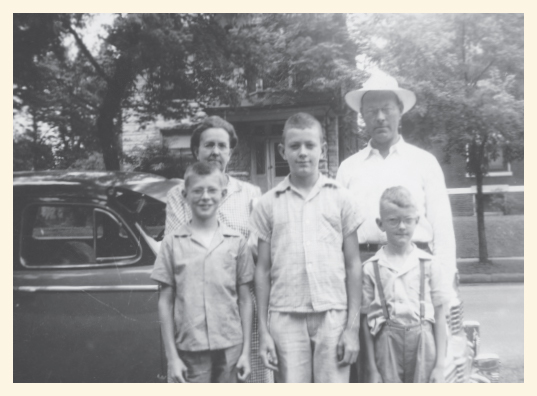By Kurt Rump
Why do we take pictures? Why do we save them? What do we do with them?
If you’re reading this, the chances are that YOU have a phone filled with photos you’ve taken. You might be of an age where you have a box (or more) of physical photos, still tucked into the envelopes along with the negatives, stashed away on a shelf somewhere. Maybe you have albums or scrapbooks that group pictures along a common theme, like Eric’s mother’s scrapbook of her time crewing the cruise ship. And yes, perhaps you have inherited boxes of OLD photos from generations past.
Why? Why do they exist?
What is the “problem” that all of these photos are trying to solve?
We take pictures to capture a moment, a feeling, an occasion, a milestone… perhaps to capture a thing of beauty like a flower or a bird, or a remarkable place like a canyon, a desert, a mountain, a forest, a waterfall… a rainbow. When we see the photos weeks or years later, it holds the memories of the moment we clicked and the moments around that moment.
One photo never tells a whole story – WE tell the stories. The photos are merely the triggers. Some of these triggers are beautifully composed pieces of art. Others are a bit blurry but there’s a story in the blurry ones, too (ask me sometime how I know that).
The photos solve the problem of remembering. When there’s a photographic record, it serves to remind us of something we knew at the time we wanted to remember. It’s that simple. Have you ever heard the phrase “pictures or it didn’t happen”? The photos are our evidence. We were here. We did a thing. We loved. We adventured. We lived.
That’s why we take them. That’s why we save them.
And sometimes we pull out the boxes, or scroll through the phone, and take our own little trips down “memory lane,” as it were. But is that enough? Is that really all we want to do with them? Keep them to ourselves for our own little trips down memory lane?
Ah, now the magic begins. The sharing. The conversation, or what we here at TightKnit like to call “the banter” is what gathers the moments around the moment together, illuminating the whole picture, telling the whole story – and it all starts with sharing the photo. Just one can trigger a virtual landslide of stories. Just one can trigger a hunt for more photos, which will trigger MORE stories. “Does anyone have a picture of Granny in her dress at her and Gramp’s 50th anniversary party? I was the one who took her shopping for that dress. What a day that was! Let me tell you…”
Photos are the triggers. Memories are the gifts. Sharing is the blessing. It’s why we take the pictures. It’s why we save the pictures.
Now what do we do with them?
Clearly keeping them in a box on the shelf, or locked away on our cell phones or memory cards isn’t creating the sharing of memories that we’d love to experience. While the photos solve the problem of remembering, the real problem – the one that we ultimately need to solve – is how we share the memories in ways that work for the others who care.
And that’s the problem-solving that so frequently goes sideways (or, for our friends across the pond, pear-shaped).
It’s easy to THINK we are solving that problem by sharing a photo on Facebook. Or by starting a family group on Facebook where photos get shared. Or by setting up a shared drive with Google or a service like Dropbox. Or maybe we make photobooks and order loads of them to give as gifts to family members (spoiler: that’s an expensive endeavor). Perhaps a scrapbook, lovingly curated and kept on a shelf, pulled out and shared when family members come to visit.
The reality is that none of those solutions are really solving the problem.
We’ve talked before about how Facebook is a feed, not meant to be a searchable archive of content. While sharing a photo and gathering comments might be a bit of a rush in the moment, it fades quickly, and then disappears… along with the photo and all of the comments, out of sight and out of mind (and living in the hope that “Facebook Memories” will bring it back to us next year to see again).
The file-sharing services have their own issues, most obvious of which is that comments and photos would either be different files OR a Word or Google Doc would need to be created for every picture and then rules of engagement and everyone would have to be on that platform and oh wait we are way out of control and we’ve barely done anything at all and STOP. Not that solution, please.
Making photobooks or scrapbooks is good for YOU, and, if you choose to make copies, for those with whom you share the copies, but they won’t be easily accessible by the far-flung relative you maybe didn’t know was the one who took Granny shopping for her dress that day but she has THE BEST STORY OF ALL TIME ABOUT GRANNY and you’re missing it now.
So what do you do? How do you create or contribute to the EXPERIENCE of sharing the photos AND the memories that go along with them?
We might be able to help you solve that problem.




